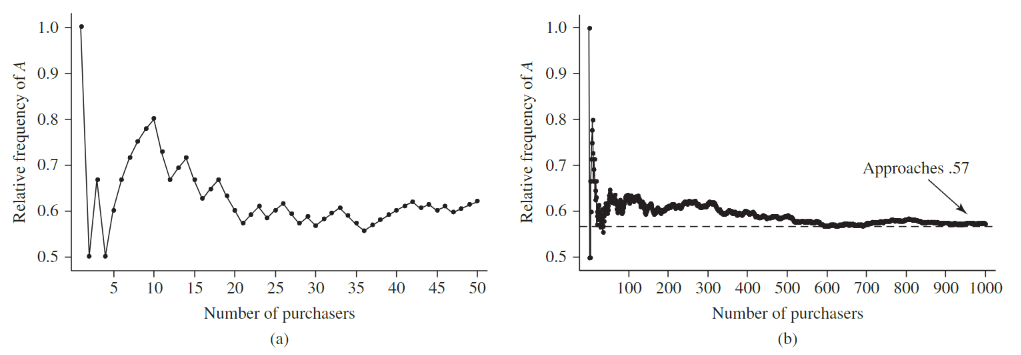Relative Frequency
If we have an experiment that can be repeatedly performed in an identical fashion, let

Normally this approaches a number as
This is essentially the Law of Large Numbers.
You cannot use the fact that you have a streak of some event
Why? Consider the next flip as the first flip! Now it doesn't matter that you flipped 8, 10, 100, or any large number of heads prior. Now you have started at square one, which shouldn't change your probability!
We say the limiting relative frequency is "objective" since it doesn't get dictated based on a small, possibly misrepresentative sample size. However, we can't realistically do an infinite number of experiments, so we usually have to base probabilities on accepted values. A fair coin has
References
- [[Matthew A. Carlton, Jay L. Devore - Probability with STEM Applications-Wiley (2020).pdf#page=44]]